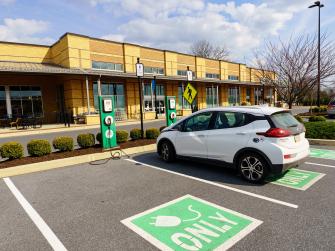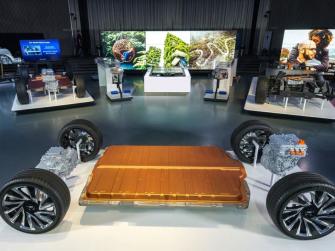Charge up your optimism: Innovations in EV battery technology are driving down auto emissions, cutting costs and creating jobs
Sales of electric vehicles are growing rapidly, but the speed of the electric revolution hinges on the batteries that make them go.
Automakers and investors, spurred on by environmental advocates, are racing to increase manufacturing capacity and develop batteries that will cost less, charge faster and store more power than today’s models. Ford and GM, for example, recently launched plans to spend almost $20 billion on EV production sites and battery plants in three states — creating nearly 16,000 jobs.
One major trend in favor of these goals is the falling cost of lithium-ion battery cells which power most EVs rolling off the assembly line today. Prices have plummeted about 97% since they were introduced in the early 1990s. and some estimates project their cost per kilowatt-hour will drop below $100 between 2023 and 2025 (down from about $132 today). At that point, industry experts agree, EVs will become cost competitive with gasoline-powered vehicles.
And while some studies predict that a coming “tsunami” of demand for lithium will cause a near-term price spike, experts predict that by 2026 prices will fall to $90/kWh and $60/kWh by 2029.
“Vehicle electrification is crucial to reaching our climate goals and protecting our communities from the substantial air pollution impacts of the transportation sector,” said Andy Su, Transportation Legal Fellow for the Environmental Defense Fund. “Rapidly declining battery costs strongly support the feasibility and affordability of the near-term electrification of these vehicles."

Transportation is now the largest source of climate pollution in the United States.
The government, too, has stepped up. President Biden recently delivered $3.1 billion to increase availability of the raw materials that battery manufacturers need, having already invoked the Defense Production Act toward the same goal, with an emphasis on increasing domestic supplies of lithium.
Those goals might soon get a boost from what lies beneath a shrinking lake bed 40 miles north of California’s border with Mexico. The Salton Sea, experts estimate, holds enough lithium to meet all future U.S. demand (and 40% of the world’s). Extracting such deposits typically use open pit mining techniques, but in this case, companies are working to pioneer eco-friendly technologies.
Scientists are also working on improved battery designs that are less reliant on raw materials like lithium, cobalt and nickel, which are environmentally destructive to extract.

Researchers are also getting closer to commercial production of solid state batteries, which would cost less, charge faster and allow EVs to go farther on a single charge. And the industry is investing heavily in recycling old batteries, which will lower costs and make manufacture more sustainable.
All that all bodes well for batteries that will drive the global trend toward EV adoption and help make fossil fuel emissions a thing of the past.










